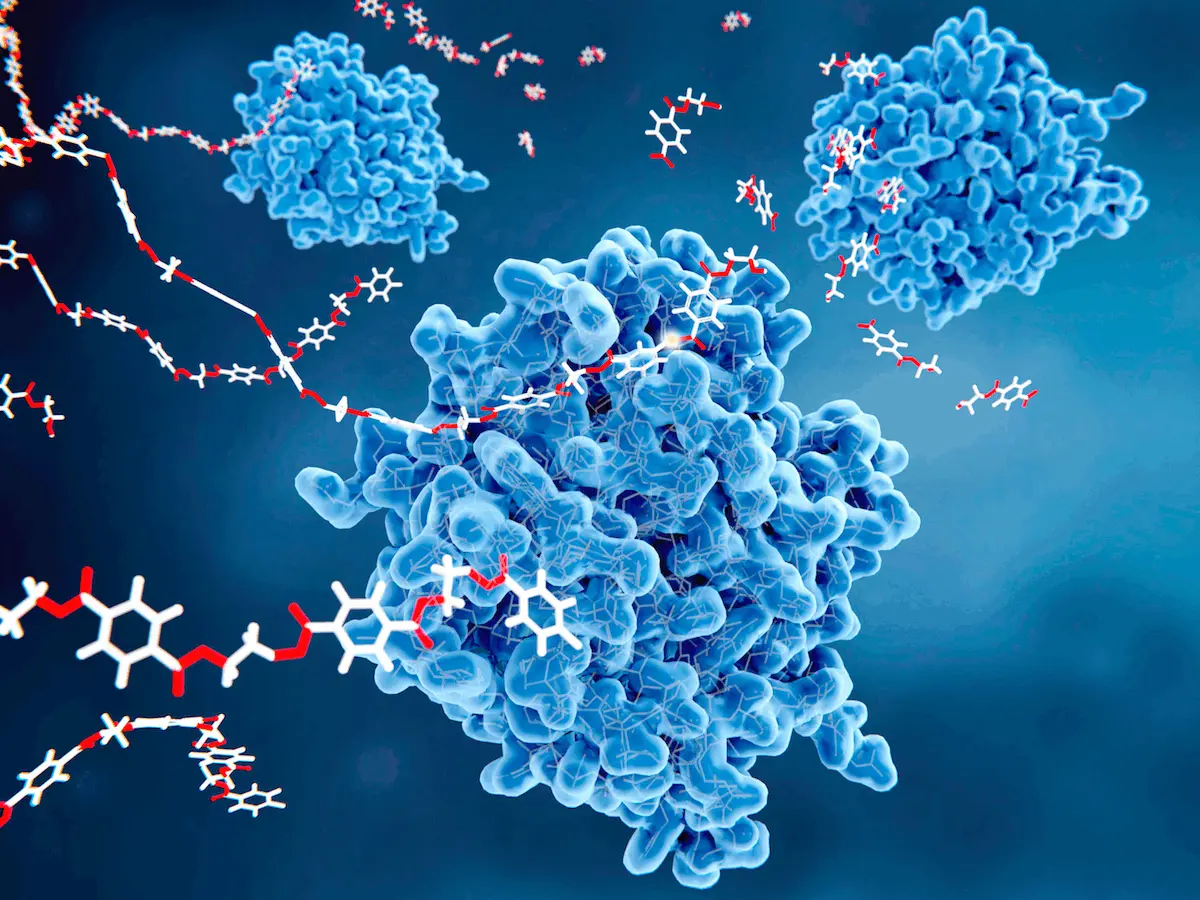Enzyme mechanisms, intricate sequences of events within an enzyme’s active site facilitating chemical reactions, are key to understanding enzyme function and evolution. Experimental approaches provide critical insights into these systems, including kinetics, mutagenesis, spectroscopy, structural analysis, and computational techniques like quantum mechanics and molecular mechanics. By providing machine-readable representations of the catalytic steps from numerous enzyme processes, the Mechanism and Catalytic Site Atlas (M-CSA) combines this voluminous knowledge. EzMechanism, an automated program utilizing M-CSA data developed by scientists from the European Bioinformatics Institute, Cambridge, UK, expedites the development of probable enzyme mechanisms from a specific active site structure, assisting researchers in putting out and evaluating hypotheses for further investigation.
Framework for understanding enzyme catalysis
The rules of enzyme catalysis: The ‘rules of enzyme catalysis’ were crafted by analyzing recurring mechanistic components from 2D curly arrow diagrams in the Mechanism and Catalytic Site Atlas (M-CSA), excluding radical and metal-involved redox reactions. Parsing these diagrams unveiled bond changes and crucial chemical groups. Using graph representations and integrating literature knowledge, potential electron pathways and feasible chemical transformations were extracted, resulting in 7,218 catalytic rules. These included 3,668 single-step rules observed in specific mechanistic steps and 3,550 mixed-step rules derived by merging information from different steps with similar chemical groups. Together, these rules form a comprehensive set of essential mechanistic components in enzyme catalysis.
The specificity and quantity of catalytic rules in EzMechanism hinge on the algorithm used for their formulation. Optimal rules, spanning atoms up to two bonds from reaction centers, strike a balance between specificity and applicability. This refined approach ensures inclusivity and treats functionally akin atoms equivalently for effective rule matching.
These catalytic rules encapsulate distinct chemical groups capable of specific transformations within an enzyme’s active site. For instance, a rule might signify a proton transfer between a protonated amine group and a deprotonated carboxylic group. Encoded as reaction SMARTS expressions, these rules lack metadata about chemical group locations, enhancing machine readability and human interpretability.
Proton transfers emerge as prevalent catalytic rules in the M-CSA, underlining their significance in enzymatic processes. Key proton transfer rules involve interactions with amino acid residues like aspartate, glutamate, lysine, histidine, tyrosine, and cysteine, along with notable rules concerning cofactors. Mixed-step rules enhance EzMechanism’s utility by integrating information from various mechanistic steps and simulating the potential effects of mutations on specific curly arrow segments.
Automatic proposal of enzyme mechanisms:
EzMechanism requires the user to supply information about the 3D structure of active sites and the overall catalyzed chemical reaction to search for the mechanism of specific enzymes. The web user interface facilitates the input process by decomposing it into four steps: (1) choose a Protein Data Bank (PDB) structure; (2) choose the catalytic residues in that structure; (3) define the substrates and cofactors and map them to ligands in the structure and (4) finally, define the overall reaction by defining their reactants and products in the context of the active site.
Validation using enzymes annotated in M-CSA
In EzMechanism’s validation, 56 enzymes were selected from M-CSA for testing. It excelled in three tests: confirming correct mechanisms as annotated in the database, showcasing a success rate of 55 out of 56. It demonstrated effective prioritization, finding the right mechanisms for 51 out of 55 enzymes, even in complex cases. When excluding enzyme-specific rules, it accurately predicted complete mechanisms for 28 enzymes, with 13 precisely matching the database. EzMechanism proves effective and reliable, showcasing promise in deciphering enzyme function and catalytic pathways.
Validation using enzymes not annotated in M-CSA
EzMechanism’s validation extended beyond M-CSA annotated enzymes, including six enzymes absent from the database. It accurately identified mechanisms for four enzymes and showcased adaptability by adjusting to a substrate alteration for PET hydrolase. This reiterated the rule coverage’s impact on predictions. Despite this, the tool consistently proposed alternative mechanisms, drawing insights from related and unrelated enzymes. A notable instance involved COVID protease, revealing diverse mechanistic paths and suggesting multiple nucleophiles, shedding light on versatile reaction routes.
Class A -lactamase was used as an illustration to show how the tool could be used. Using the PDB structure of the -lactamase from E. coli (1TEM), -lactamases, crucial in antibiotic resistance, were investigated. According to the established reaction mechanism, a covalent intermediate with Ser70, through the mediation of Glu166 and bridging water, causes the lactam ring to be cleaved, followed by a water molecule attacking nucleophilically.
EzMechanism generates a large number of configurations (9,855) with an emphasis on those with up to five steps and distances under 6 in order to investigate -lactamase mechanisms. It exposed an alternative process that differed somewhat in its phases and configurations. Insights into enzyme function and catalytic pathways could be gained thanks to the tool’s potential to untangle complex systems, which was demonstrated.
Test case of β-lactamase A
The study on β-lactamase showcased EzMechanism’s capability to propose multiple mechanistic possibilities, aiding in understanding enzyme catalysis and offering valuable insights into potential mechanisms beyond those initially annotated. Energy calculations were noted as a means to validate and refine these proposed mechanisms further.
EzMechanism innovatively generates enzyme mechanistic hypotheses using a diverse rule set. Its advantage lies in comprehensive rule coverage, surpassing traditional approaches. Though not yet a complete prediction solution, it shows promise in understanding enzyme evolution and disease mechanisms, with the potential for further advancements in computational biology. EzMechanism’s rule set is derived from a broad array of enzymes, ensuring excellent coverage of chemical space and not limiting the search to similar enzymes or reactions. It comprehensively explores combinations of rules, facilitating the consideration of previously unexplored paths. The software’s potential applications are vast, aiding in understanding enzyme evolution associated diseases and designing new enzyme functions. EzMechanism is envisioned as a vital tool to codify and apply chemical knowledge for predictive enzyme mechanism analysis.
The M-CSA database and programming details
The Mechanism and Catalytic Site Atlas (M-CSA) is a meticulously curated database of catalytic sites and enzyme mechanisms. It offers detailed annotations on enzyme reaction mechanisms for 734 enzymes, encompassing 3,238 catalytic steps, although this paper focuses on 691 enzymes and 2,925 catalytic steps by excluding radical reactions. The data in M-CSA has been pivotal in understanding enzyme function and evolution and has been utilized in various research endeavors. The programming behind this project is integrated within the M-CSA codebase, employing technologies like the Python Django Web Framework and PostgreSQL database. RDKit, NetworkX, ChemAxon MarvinJS plugin, and Cytoscape JS are key components utilized in data manipulation, graph creation, and visualization.
Rules behind the creation of enzyme catalysis
The catalytic rules in this study are derived from the curly arrow diagrams in M-CSA, represented internally as ChemAxon Marvin files. Each catalytic step is generally associated with a catalytic rule, but for flexibility and accuracy, rules are not created for each step individually. Instead, information from different steps is combined by representing curly arrows as a directed graph. Simple paths in this graph are used to generate catalytic rules, ensuring coverage and avoiding rigidity. Rules are saved as reaction SMARTS in the database and linked back to the original enzymes and mechanistic steps.
Input preparation and search algorithm setup: EzMechanism offers a user-friendly web interface for initiating mechanistic hypothesis calculations. Registered M-CSA users can easily input details step by step, selecting a PDB structure, identifying catalytic residues, specifying substrates, and representing the overall reaction in a 2D schematic. A 3D protein viewer aids in active site focus and residue/ligand selection. The interface facilitates mapping native substrates to PDB ligands by providing distances and similarity metrics. It ensures balanced configurations and accurate atom-to-atom mapping. EzMechanism’s search algorithm utilizes 2D/3D schemes and SMILES string representations to explore catalytic chemical space effectively. RDKit Mol objects store crucial configuration data for precise identification and prioritization of reaction centers. Coordination is sourced from PDB files and optimized using MMFF94, guided by the 2D scheme for reaction center identification.
Conclusion
EzMechanism is a cutting-edge tool for understanding how enzyme reactions work by automatically creating mechanistic hypotheses based on a huge database of enzyme mechanisms. It offers substantial advantages over conventional methods by covering a wide range of chemical space and investigating a variety of enzymatic reactions utilizing broad rule sets. Extensive searches are given priority, and proposed processes are connected to the original literature and M-CSA entries for comparison and integration with current knowledge. With the increasing availability of sequence and structural data, EzMechanism offers hope to understand enzyme evolution, related diseases and help to design new enzyme functionalities.
Article source: Reference Paper
Learn More:
Prachi is an enthusiastic M.Tech Biotechnology student with a strong passion for merging technology and biology. This journey has propelled her into the captivating realm of Bioinformatics. She aspires to integrate her engineering prowess with a profound interest in biotechnology, aiming to connect academic and real-world knowledge in the field of Bioinformatics.
















